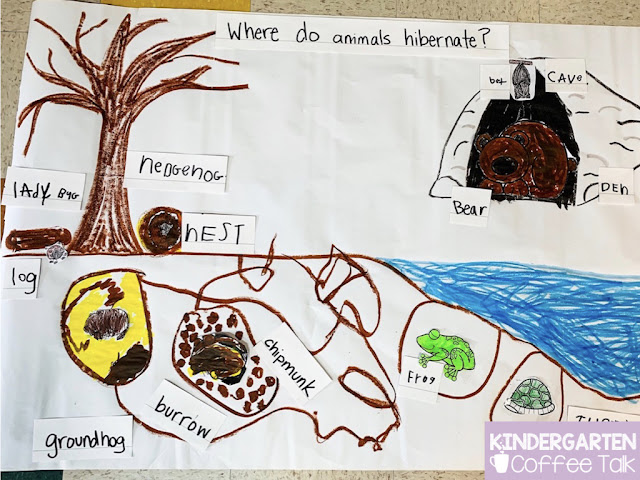If you haven't seen this book, you must check it out! Jan Brett's books and illustrations are always so captivating for kids and adults alike. I love the little cut out pictures on the side and how you can talk about what is happening in the side pictures while the characters are doing something else in the story. It is just great for developing executive function skills and theory of mind. We loved using our retelling cards to retell and then act out the story.
Then, we couldn't forget our hedgehog snack! Each Friday we make a snack to match our theme... it gives us something to look forward to! We used pre-made sugar cookies, frosting, chocolate chips, and cocoa krispies. Didn't they turn out cute?
After reading The Snowy Nap, we had so many questions about hibernation. {Which animals hibernate? Why do they hibernate? Where do they hibernate?} We did a little research to figure out our answers and then made a poster to teach others what we learned. I helped by drawing some of the background and giving them pictures to color so that we could focus on interactive writing. We used our favorite Kwik Stix paint for our mural. If you haven't tried them you must! They are paint sticks that dry in 60 seconds...amazing! If you'd like to try them, you can click here and use the code COFFEETALK10 for 10% off (affiliate link).
We also enjoyed reading A Time to Sleep to help us better understand the variety of the animals that hibernate and where they hibernate.
To answer the question "why do animals hibernate?", I froze blueberries in a container and asked the kids to pretend to be hungry bears and get enough berries to eat out of the ice. They tried dropping the ice on the table to break it or digging the berries out of the ice, but they couldn't get enough to be full. We left the frozen berries in the container overnight and observed that we could get all the berries out when the ice melted.
We made a bear paw for snack out of a graham cracker, Reese's cup, chocolate chips, and peanut butter.
Do you teach about hibernation in your classroom? What are your favorite activities and books?
Happy Teaching!

















































